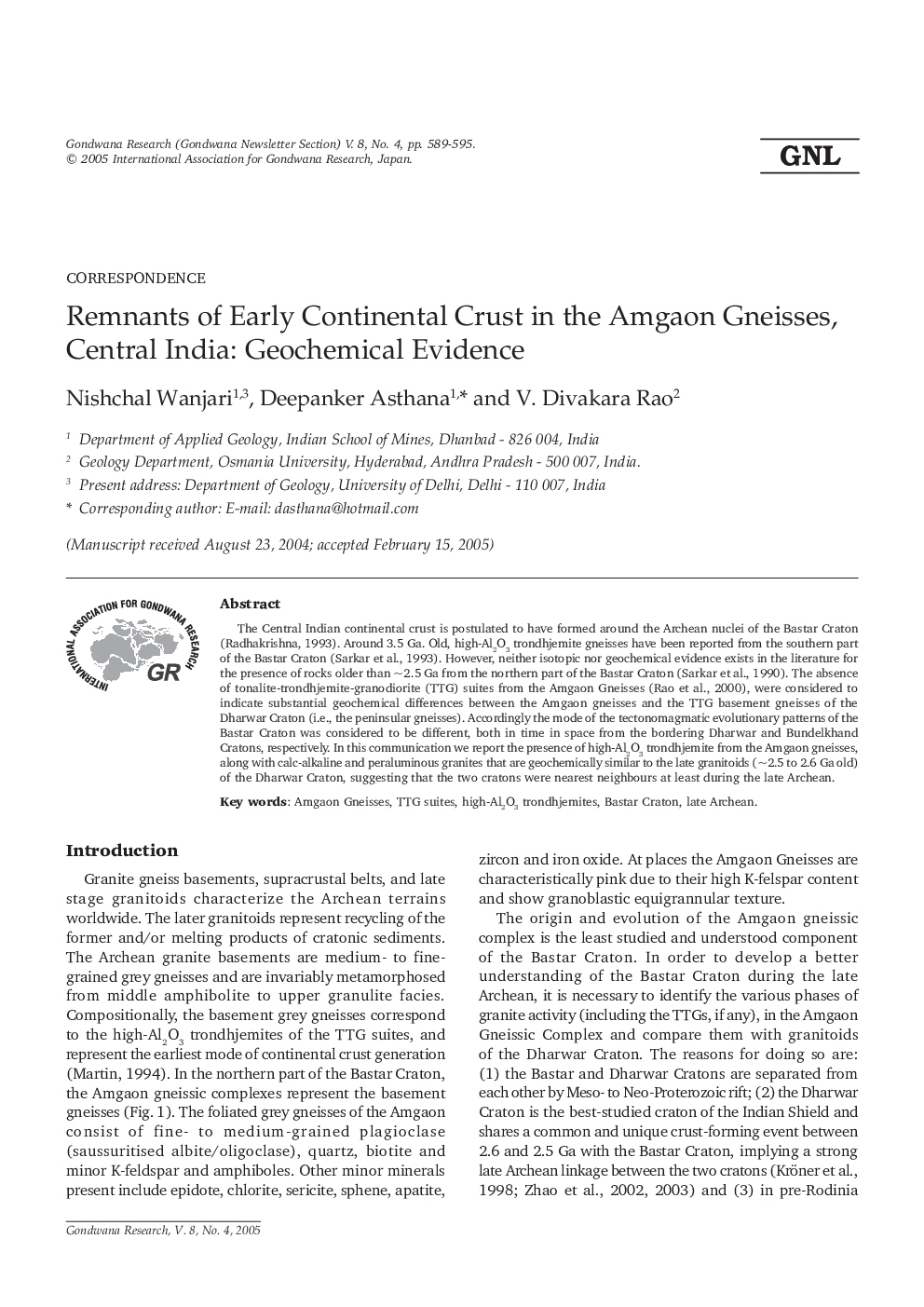| Article ID | Journal | Published Year | Pages | File Type |
|---|---|---|---|---|
| 9534735 | Gondwana Research | 2005 | 7 Pages |
Abstract
The Central Indian continental crust is postulated to have formed around the Archean nuclei of the Bastar Craton (Radhakrishna, 1993). Around 3.5 Ga. Old, high-Al 2 O 3 trondhjemite gneisses have been reported from the southern part of the Bastar Craton (Sarkar et al., 1993). However, neither isotopic nor geochemical evidence exists in the literature for the presence of rocks older than â¼2.5 Ga from the northern part of the Bastar Craton (Sarkar et al., 1990). The absence of tonalite-trondhjemite-granodiorite (TTG) suites from the Amgaon Gneisses (Rao et al., 2000), were considered to indicate substantial geochemical differences between the Amgaon gneisses and the TTG basement gneisses of the Dharwar Craton (i.e., the peninsular gneisses). Accordingly the mode of the tectonomagmatic evolutionary patterns of the Bastar Craton was considered to be different, both in time in space from the bordering Dharwar and Bundelkhand Cratons, respectively. In this communication we report the presence of high-Al 2 O 3 trondhjemite from the Amgaon gneisses, along with calc-alkaline and peraluminous granites that are geochemically similar to the late granitoids (â¼2.5 to 2.6 Ga old) of the Dharwar Craton, suggesting that the two cratons were nearest neighbours at least during the late Archean.
Keywords
Related Topics
Physical Sciences and Engineering
Earth and Planetary Sciences
Geology
Authors
Nishchal Wanjari, Deepanker Asthana, V. Divakara Rao,
